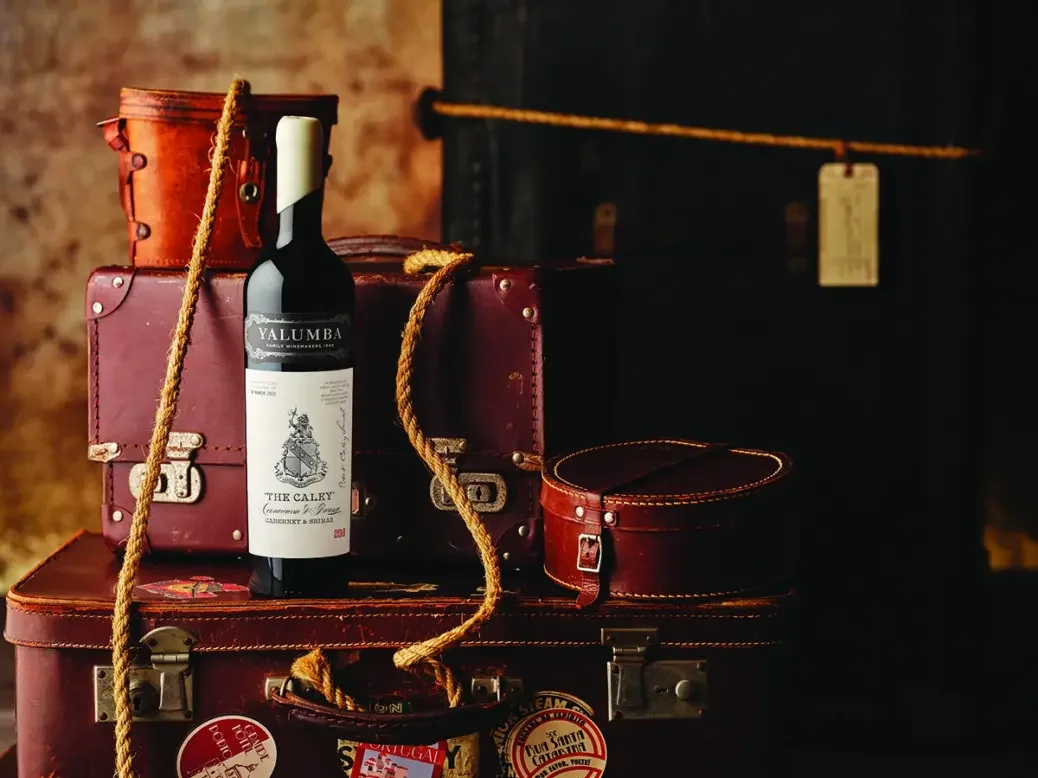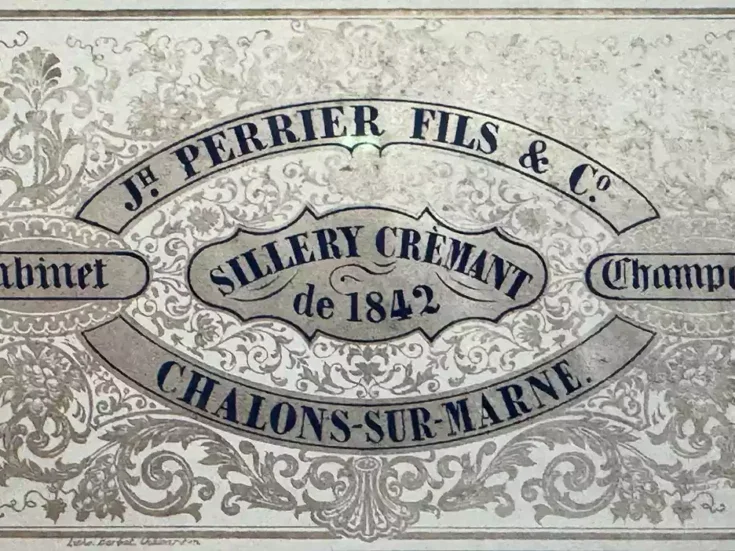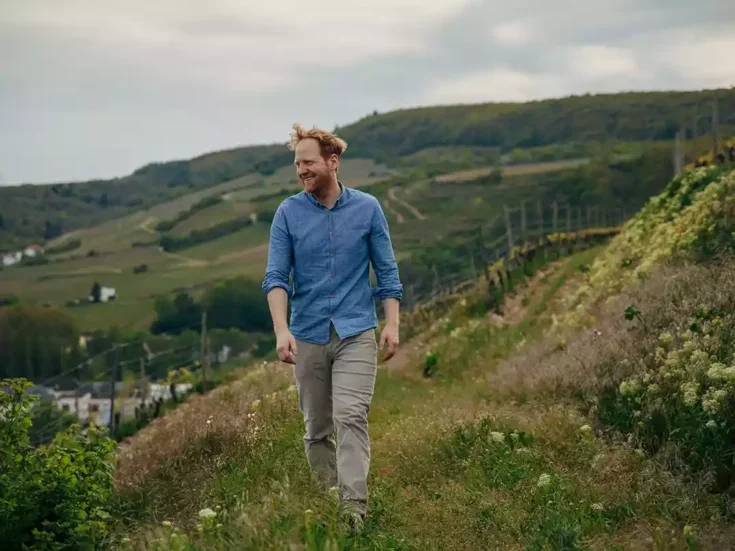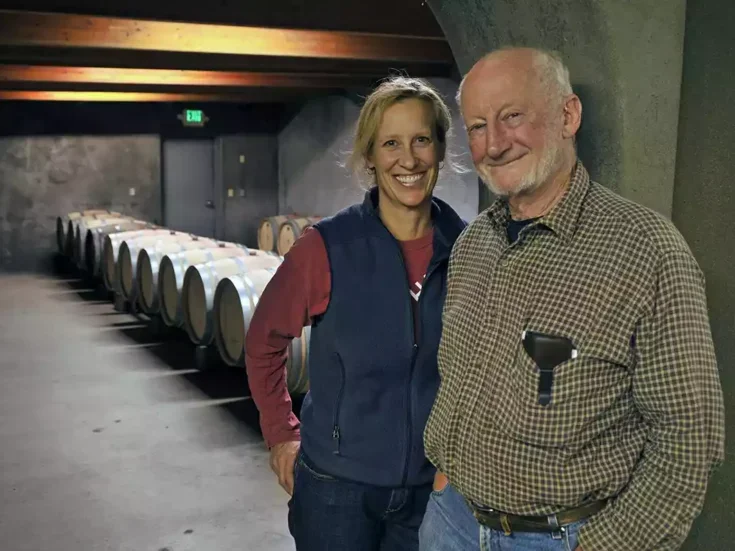
Sarah Ahmed enjoys a vertical of Yalumba The Caley, a refined version of the classically Australian blend.
Known as “claret” in the early 1900s and latterly as “the Great Australian Red,” Cabernet Sauvignon/Shiraz blends from down under carry a certain weight of expectation—not least those from Australia’s oldest family-owned wine producer, Yalumba. The company, which celebrates its 175th anniversary this year, launched its acclaimed Special Reserve Galway Claret in 1942, and it was rebadged The Signature Cabernet/Shiraz in 1962. Now in its 50th release (the 2021), each vintage singles out an individual (“the signatory”) who has contributed to Yalumba’s culture and traditions, underscoring the status of this quintessentially Australian heritage blend. Speaking at the London launch of Yalumba The Caley 2018 in June 2023, senior red-wine maker Kevin Glastonbury observed, “Yalumba’s iconic wines over the years have been Cabernet Sauvignon/Shiraz blends.”
The Caley: One vintage at a time
Eleven years earlier, Glastonbury had been charged with creating The Caley, a new flagship Cabernet Sauvignon/Shiraz blend. When Robert Hill-Smith (Yalumba’s chair) had overseen the launch of The Caley’s maiden 2012 release in 2017, the fifth-generation proprietor had explained its genesis thus: “Walshy [Brian Walsh, Yalumba’s former director of wine] rang me to say, ‘There are so many beautiful ferments, 2012 is the year to look at a Coonawarra Cabernet and Barossa Shiraz.’”
Laying bare the evidence before us in the shape of all six vintages of The Caley, Glastonbury shared his journey creating Yalumba’s top-tier Cabernet Sauvignon/Shiraz blend, which retails for A$420. No pressure? Hardly. Candidly talking us through each release, the Barossa-born-and-bred winemaker confided, “With 30 years of history behind The Signature when I joined Yalumba in 1999, I had a clear idea of what it was and what it can be. [The Caley] was conjured in my head, vintage by vintage.”
In 2012—an “out-of-the-box vintage for South Australia,” confirmed Glastonbury—he shared Walsh’s belief that there was “clear potential to follow a different direction.” The Signature (A$45) had been exclusively sourced from the Barossa since 1995 and was aged in American, French, and Hungarian oak. While Yalumba The Reserve (A$100) was matured in French oak (like The Caley), this intensely concentrated, ripe, “best barrels” Cabernet Sauvignon/Shiraz flamboyantly showcased its 100% Barossan (and ’90s) roots.
A point of difference
In some respects, you could say that The Caley—a particularly refined example of the genre—sits between the two. The opulent, oaky 2006 Yalumba The Reserve, shown after the vertical, highlighted The Caley’s relatively nuanced, restrained profile and line. And The Caley is more polished than The Signature. In Glastonbury’s words, The Caley is “an international, not a specifically Australian style. It has refinement, purity, and a little bit more finesse than [classic] Australian wine.”
Setting the tone from the off, Hill-Smith had introduced the 2012 vintage of The Caley alongside Australian and French icons, notably Château Mouton Rothschild 1959 and Penfolds Bin 620 Coonawarra Cabernet/Shiraz 1966. Although the chair identified the latter as “the base-wine inspiration for Cabernet/Shiraz,” it would seem that Glastonbury did not get the memo, or at least did not divine Hill-Smith’s full intent when he came to blending the first release, which incorporated 27% of Barossa Valley Cabernet Sauvignon, in addition to 52% Coonawarra Cabernet. Reporting on his subsequent exchange with Hill-Smith, a perplexed Glastonbury could only reply no, when his boss asked, “Didn’t we tell you we just wanted Coonawarra Cabernet Sauvignon?” “[The Barossa Cabernet] was the strongest wine on the day,” recalled Glastonbury, humorously shaking his head at the memory.
The X factor
In subsequent years, Hill-Smith’s wish has been granted, and The Caley’s Cabernet Sauvignon comes exclusively from Coonawarra. Going forward, Glastonbury believes it will continue to be Coonawarra Cabernet; “But never say never,” he quipped. After all, multiregional blending has been elevated to an art form in Australia. Looking back to the 2017 launch, my notes describe The Caley 2012’s Barossa Cabernet as “a bridge” between the Coonawarra Cabernet and Barossa Shiraz. Having now tasted it alongside five subsequent releases, though beautifully proportioned, the Barossa Cabernet’s riper and fleshier, sweet-blueberry lift differentiates The Caley 2012 from later vintages.
The Caley 2013 sits apart for a different reason. Although Glastonbury reckoned that having around 70–80% Cabernet Sauvignon was his “ballpark for a bold Cabernet/Shiraz to sit,” in a hot, dry year with small bunch architecture, “we needed more Shiraz in 2013, because of the strength of the wine,” he said. The Caley 2013 features an all-time-high 45% Shiraz component from two Barossa Valley vineyards that, thus far (“never say never”), have only appeared in this powerfully structured release, with its distinctively dense fretwork of tannins.
Direction and flow
By the time 2014 came around, Glastonbury reflected, “I had no idea in year three what [The Caley] was: no clear direction, no label, no price point, no packaging.” As it turned out, it was a watershed year. In an exceptionally long growing season, Glastonbury returned to his ballpark Cabernet Sauvignon component, which accounted for 82% of the blend—all from Coonawarra, of course and, just as important, from The Caley’s continuity Cabernet parcel throughout: the Ming D block of the Yalumba Coonawarra Vineyard (formerly known as Menzies vineyard).
Enhancing freshness and line, the Coonawarra focus “set the direction and flow and clarity for following vintages,” said Glastonbury. Since then, Ming D block has comprised between 71% and 80% of the blend. And in 2015, 2016, and 2018, The Caley’s Shiraz has similarly coalesced around two Barossa vineyards—the Horseshoe Vineyard in the Barossa’s elevated Eden Valley subregion and the Burgemeister Vineyard in Light Pass, the Barossa Valley. While the Horseshoe Vineyard featured once again in 2019 (a sneak preview of which vintage was granted ahead of the official release this September), the Barossa Valley component came from The Crown Village Schrapel Old Shiraz block in the Tanunda foothills, near Krondorf. The Burgemeister Vineyard was one of several that contributed to Yalumba The Octavius Old Vine Shiraz in 2019.
From the 2014 vintage onward, The Caley is finer-honed, yet with delicious fruit intensity, which explains why none was made in 2017—a cooler, wetter year when, said Glastonbury, “the profile of the Cabernet Sauvignon was not right for The Caley; we didn’t want to interrupt the flow of the style.” He does not expect The Caley to be released in the 2020 or the 2023 vintage either.
The right approachability
The style of The Caley is also shifting subtly because, said Glastonbury, “We have been working hard with Yalumba’s Rare and Fine range to find the right amount of approachability.” The process started in around 2012, with The Octavius Old Vine Shiraz, which, he admitted, used to have so much oak and tannin that “it needed ten years before you could drink it.” Starting with the 2018 vintage, the new, improved Octavius became the first Barossa wine to be sold as part of La Place de Bordeaux’s “Beyond Bordeaux” September campaign.
As for The Caley, Glastonbury hailed the importance of around 15% of Eden Valley Shiraz to enhance “right in the middle of the palate” and for “shining through with violets.” In future, he believes sourcing from another Eden Valley Vineyard in addition to the Horseshoe Vineyard will add to The Caley’s finesse. He is also tweaking factors such as the alcohol, tannin, pH, titratable acidity (TA), and fermentation temperatures. Small increases in the pH change the mouthfeel. You can feel it in The Caley 2018 and, enthused Glastonbury, even more so in 2019—
“It has a richness, an approachability in the mouth.” Like a great sauce that completes a dish, The Caley 2019 has an alluring, glossy quality: Sumptuous yet lithe, it inexorably draws one back to the glass. In an exceptionally low-yielding, early Barossa vintage, The Octavius Barossa Old Vine Shiraz 2019 has a meaty, spicy restraint, yet similarly, the mid-palate sheathes the structured tannins in velvet, enhancing its overall approachability.
Signing off
Glastonbury himself became an honored signatory in 2023, following the release of Yalumba The Signature 2019. While he admitted to being “super-, super-proud of The Caley and where it sits in the world of wine,” as with any winemaker worth their weight in gold, the refinements and tweaks will continue. The Caley, he urged, “is not a short-term prospect; it represents a long journey for Yalumba and our reputation.” Like Hill-Smith, he was proud to show his creation alongside a (new) Bordeaux icon—Château Palmer Historical XIXth Century Wine L20.17—which, with an addition of Rhône Syrah, similarly draws inspiration from tradition. With greater clarity and line, it was The Caley that safely won my vote.

Tasting
2019 Yalumba The Caley Cabernet & Shiraz (Coonawarra & Barossa, South Australia)
A warm dry year, which was particularly highly regarded in Coonawarra. Frost, hail, and wind around flowering slashed yields in the Barossa, producing intensely concentrated Shiraz, with structured tannins. The grapes were harvested between February 22 and April 9, 2019.
77% Ming D Block Coonawarra Cabernet Sauvignon, with 23% Barossa Shiraz from The Crown Village Schrapel Old Shiraz block, Barossa Valley (19%), and Horseshoe Vineyard in Eden Valley (4%). 19 months in 24% new French barriques, balance in one-year and older French barriques. ABV 14%, TA 6.54g/l, pH 3.55, SO2 114mg/l.
The Coonawarra Cabernet Sauvignon sings out joyously on both the nose and the perfumed palate, with soaring blackcurrant and mulberry, dried herbs, and a hint of classic Coonawarra mint, notes of which follow through in the mouth, together with blueberry and subtle iodine and kelp undertones. The Shiraz, relatively restrained, adds a twist of Eden Valley pepper mill, complementing the judicious oak spices (cedar, sandalwood, and nutmeg). Lithe and glossy in the mouth, it flows beautifully yet has the firm backbone of tannin to go the distance. 2024–40+. | 97
2018 Yalumba The Caley Cabernet & Shiraz (Coonawarra & Barossa, South Australia)
This was an excellent year in which solid winter rainfall replenished water reserves and the warm, dry growing season was tempered by the Bonney upwelling’s cooling influence in Coonawarra and cool nights in the Barossa. The grapes were harvested March 5–28.
80% Ming D Block Coonawarra Cabernet Sauvignon, with 20% Barossa Shiraz from Horseshoe Vineyard in Eden Valley and Burgemeister Linke block in Light Pass, Barossa Valley. 21 months in 25% new French barriques, balance in two-year and older French barriques and hogsheads. ABV 14%, TA 6.3g/l, pH 3.55, SO2 125mg/l.
Fresh blackcurrant to the fore on perfumed nose and palate, with redcurrant and fleshier blueberry following suit. Notes of twig, wattle, cedar, and fragrant pepper make for an intricacy and cool sense of restraint. Ripe but present, textured, silt-fine mineral tannins bleeding into and underwriting the fruit, maintaining line and length to the layered finish. Lovely poise and definition. 2023–37+. | 96
2016 Yalumba The Caley Cabernet & Shiraz (Coonawarra & Barossa, South Australia)
A warm, dry vintage in Coonawarra, harvested early—in February. Conditions in the Barossa were warm and dry until the end of January, when approximately 1in (25mm) of rain fell, refreshing the vines; warm autumn conditions with cool nights led to great acid retention and pristine fruit flavors. The grapes were harvested in March.
71% Ming D Block Coonawarra Cabernet Sauvignon, with 29% Barossa Shiraz from Horseshoe Vineyard in Eden Valley and Burgemeister Linke block in Light Pass, Barossa Valley. 21 months in 25% new French barriques, balance in two-year and older French barriques and hogsheads. ABV 14%, TA 6.5g/l, pH 3.51, SO2 127mg/l.
A classic Coonawarra thread of cool mint to nose and palate, with pronounced twiggy notes and a lick of chocolate (oak) to the fresh blackcurrant and succulent plum fruit. Well structured, with incisive acidity and dynamic tannins, which firm up going through. An assertive, firm, focused finish, with a polished, bright, concentrated beam of fruit boding well for longevity. 2023–36+. | 97
2015 Yalumba The Caley Cabernet & Shiraz (Coonawarra & Barossa, South Australia)
A warm, dry, early vintage in Coonawarra produced small, intensely concentrated berries. In the Barossa, a long, mild summer with few heat spikes and cool nights produced aromatic, pristine, well-concentrated fruit. The grapes were harvested between February 13 and April 2.
74% Ming D Block Coonawarra Cabernet Sauvignon, with 26% Barossa Shiraz from Burgemeister Linke block in Light Pass, Barossa Valley and Horseshoe Vineyard in Eden Valley. 21 months in 46% new French barriques, balance in two-year and older French barriques. ABV 14%, TA 6.5g/l, pH 3.49, SO2 111mg/l.
Hints of blackcurrant bud, mint, and fresh-turned earth to the nose, together with intense blackcurrant, redcurrant, plum, and berry fruit, which follows through on a muscular palate. Sustained fine-grained tannins, a fretwork, and fresh acidity buoy the fruit along. Broader-shouldered, the oak is a touch more pronounced in the mouthfeel and (savory) flavor, adding bitter chocolate, wafer, and malt-biscuit notes into the mix. 2023–35+. | 95
2014 Yalumba The Caley Cabernet & Shiraz (Coonawarra & Barossa, South Australia)
A wet winter followed by a warm, dry growing season with cool nights produced excellent concentration and tannin structure in Coonawarra. The Barossa enjoyed a good winter and dry, warm growing season, until a 4in (100mm) 24-hour downpour in February, which slowed the ripening process. The resulting moderate crop produced generous flavors with balanced tannins and natural acidity. The grapes were harvested between February 28 and May 6.
82% Ming D Block Coonawarra Cabernet Sauvignon, with 18% Barossa Shiraz from Crown Village Old Shiraz vineyard in the foothills of the eastern Barossa ranges, Barossa Valley and Horseshoe Vineyard in Eden Valley. 20 months in 40% new French barriques, balance in two-year and older French barriques. ABV 14%, TA 6.2g/l, pH 3.52, SO2 107mg/l.
Elegant from tip to toe, with brilliant freshness, clarity, and flow to the palate. Juicy, perfumed, cedar-edged blackcurrant leans into the palate, sitting just so. Classically proportioned, long, and precise, with saturating acidity and fine-boned tannins, the Coonawarra Cabernet asserting itself in clarity of flavor, drive, and line. 2023–34+. | 96
2013 Yalumba The Caley Cabernet & Shiraz (Coonawarra & Barossa, South Australia)
A wet winter followed by a mild, pleasant growing season in Coonawarra produced ideal color, flavor, and tannin accumulation. A drier than average winter and warm dry growing season produced lighter-weighted Shiraz with smaller bunches. Mild nights helped maintain aroma and freshness. The grapes were harvested between February 13 and March 25.
55% Ming D Block Coonawarra Cabernet Sauvignon, with 45% Barossa Valley Shiraz from the Cowham antique Shiraz 1955 block in Light Pass and the Schrapel Old Shiraz 1974 block along the Tanunda foothills. 20 months in 41% new French barriques, balance in two-year and older French barriques and hogsheads. ABV 14%, TA 6.9g/l, pH 3.44, SO2 102mg/l.
The firm fretwork of tannins—a palpable rail—has, from the outset, been the defining character of this release. Muscular, firm redcurrant and black fruits add to the sense of solidity, relative to the other vintages. A sleeper? Time will tell. For now, it remains locked down. 2023–33+. | 94
2012 Yalumba The Caley Cabernet & Shiraz (Coonawarra & Barossa, South Australia)
A wet winter followed by warm, dry conditions in Coonawarra produced great acidity, intensity, and supple tannins. A mild January and February allowed the Barossa Shiraz and Cabernet Sauvignon to ripen steadily, producing outstanding color and concentration. The grapes were harvested March 2–20.
52% Ming D Block Coonawarra Cabernet Sauvignon, with 27% Barossa Valley Cabernet Sauvignon from the Simon Cowham vineyard in Light Pass and 21% Eden Valley Shiraz from Horseshoe Vineyard. 22 months in 31% new French barriques, balance in two-year and older French barriques. ABV 14%, TA 6.7g/l, pH 3.57, SO2 99mg/l.
As perfumed and seductive as ever, with lifted florals and supple tannins. The Barossa fruit is more pronounced (with bottle-age and/or in comparison with the other vintages?), with sweet blueberry and Black Forest gâteau and suggestions of ripe black olive. Rippling, lithe, still vibrant, glossy even, with a reassuring undertow of tannins and harmoniously integrated acidity. 2023–32+. | 95
Other recent releases
2019 Yalumba The Octavius Barossa Old Vine Shiraz (Barossa, South Australia)
A cool winter with lighter than average rainfalls. Frost, hail, and wind around flowering slashed yields in the Barossa. This and the mild, dry growing season produced intensely concentrated Shiraz, with structured tannins. The grapes were harvested February 22 to March 15.
55% Eden Valley Shiraz, principally The Bartholomaeus family vineyard (planted 1920) and The Scott Thorn Clifton Park Shiraz vineyard (planted 1854), with 45% Barossa Valley Shiraz, principally The Burgemeister Linke block (planted 1901), The Schiller family vineyard (planted 1950 and 1945), and The Simon Cowham old Shiraz block (planted 1955). 19 Months in 25% new French oak hogsheads and barriques, with the balance in one-year and older French octaves and barriques. ABV 14.5%.
This spicy, brooding, densely structured release of The Octavius currently wears the Eden Valley component of the blend (55%) on its sleeve, with meaty, (black) peppery undertones, wattle seed, licorice, and a rub of sage. With air, subtle riffs of lavender and violet tick the floral box. Taken together with the firm tannins and charry (rather than sweet) oak, it makes for a relatively dry flavor profile, though there can be little doubt about the intensity of muscular black and blue fruit that lurks beneath. On day two, it starts to limber up, sheathing the tannins in velvet and sketching out the mid-palate with blood plum and blueberry. Embryonic, with great potential. 2025–45+. | 96+
Yalumba The Signature Cabernet Sauvignon & Shiraz 2021 (Barossa, South Australia)
Adequate late-winter and spring rains followed by dry conditions provided a great balance between crop and canopy after two years of minuscule yields. A mild to warm summer with cool nights produced balanced, aromatic reds, with excellent varietal definition. The grapes were harvested March 2–20.
53% Barossa Valley Cabernet Sauvignon, 47% Shiraz (39% from the Barossa Valley, 8% from Eden Valley). 19 Months in 23% new Hungarian hogsheads and French barriques and hogsheads, with the balance in older French and Hungarian barriques and hogsheads. ABV 14.5%, TA 6.06g/l, pH 3.63, SO2 87mg/l.
The 50th release of this, the epitome of the Great Australian Red, is seamlessly crafted and beautifully nuanced. Rich and deep in hue and flavor, with blackcurrant/cassis, succulent black-cherry and blueberry fruit, and complexing garrigue, licorice, black-pepper, and cigar-box nuances. A sheaf of fine, layered tannins and harmonious rolling acidity make for a lingering, flavorsome palate. Eminently broachable now, but The Signature has an excellent track record for aging. 2024–40+. | 95






